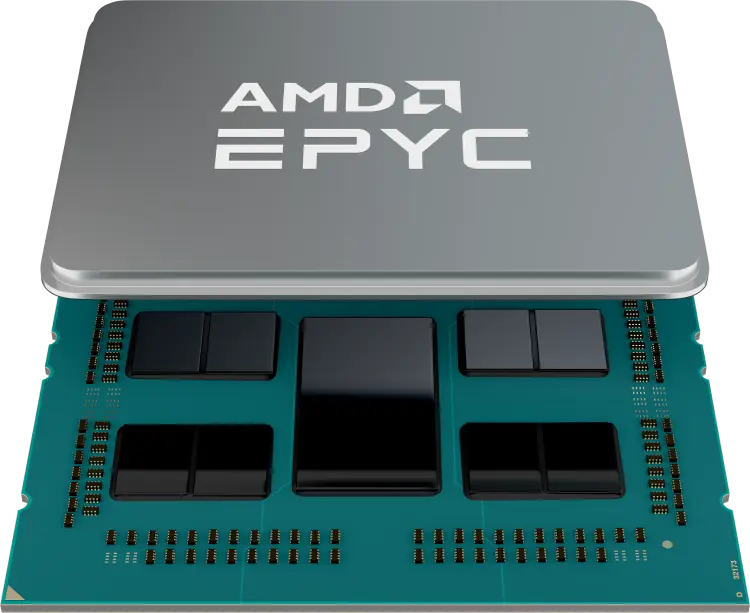
AMD released its latest high-performance processor this week, promising big improvements for data centre, cloud and enterprise customers. The company has been growing its share of the server chip market in recent years, and is banking on the new processor, Epyc Milan, to help it convince more hyperscale cloud providers to make the switch from market leader Intel, which is struggling to keep pace with AMD’s technological advancements.

With Epyc Milan, AMD is continuing its trip around Italy when it comes to names, having dubbed previous generations of the Epyc family Naples and Rome. The chip offers a 19% performance boost on its predecessor, the Epyc Rome, which the company claims makes it the world’s highest-performing server processor. It will “help customers solve today’s most complex IT challenges, while substantially growing our ecosystem,” according to Forrest Norrod, senior vice-president and general manager in AMD’s data center and embedded solutions business group.
AMD also points out in its press release that it has delivered Milan “on time”, which would appear to be a dig at rival manufacturer Intel, which has experienced delayed releases of several processors over recent years and has yet to confirm a full release date for its next-generation server chip, Ice Lake. This had been expected to ship in mid-2020, but has been delayed due to problems with Intel’s 10nm manufacturing process.
AMD Epyc Milan vs Intel Ice Lake: AMD’s technology advantage
When it comes to the technology, AMD’s new processor represents an incremental performance bump rather than a paradigm shift. “We’re well beyond the stage of step function increases,” says Alan Priestley, vice-president analyst for emerging technologies and trends at research business Gartner. “The Milan is a refinement on the previous generation rather than a completely new architecture, but it will deliver a performance increase.”
The Milan is built on 7nm technology, allowing AMD to include 64 chip cores, more than Intel is likely to offer on its 10nm Ice Lake. “As far as we know the Ice Lake will have 28 or 30 cores, though it could be 32,” Priestley says. “This is the first chip Intel has produced on 10nm, so there may be some benefits there in terms of transistor density that we haven’t seen on their previous products, but [AMD] has been able to get the core count up so Milan is going to be considerably better than what Intel can deliver,”
Can AMD woo the hyperscalers?
AMD’s share of the server chip market is small but growing. In Q4 2020 it held 7.1% of the market compared to Intel’s dominant 92.9%. But this is up from 4.5% in Q4 2019, and 0.88% three years ago, a large gain in a market where change usually occurs at a glacial pace.
“AMD has been gaining share over the last three years, but it’s a market where there’s a lot of inertia,” Priestley says. “Just because you’ve got a faster, better chip doesn’t mean you can displace the incumbent. IT organisations spend a lot of time making purchasing decisions and rolling out large numbers of machines, so once they’ve made that decision they’re not likely to change their mind just because something new has come along.”
While AMD may face an uphill struggle to recruit more enterprise customers, it could make in-roads with the hyperscale cloud providers looking to add more capacity rather than replace existing servers. In its announcement of Milan, the company unveiled a list of organisations already using or planning to use the processor, which included cloud market leaders AWS and Microsoft Azure, as well as Google Cloud, IBM Cloud and TenCent Cloud.
Priestley says Milan could be the chip that convinces cloud providers to switch more of their virtual machines away from Intel. “We’re going to start to see the hyperscale community more aggressively deploying Milan,” he says. “With [first-generation Epyc chip] Rome they took a look at it and kicked the tyres a bit. With [its successor] Naples, they carried out some initial deployments, and with Milan, I think we’ll start to see this really push on.”
Last year, cloud infrastructure spending pulled well clear of enterprise spending on data centres, with figures from the Synergy Group released today, showing that cloud infrastructure spending in 2020 grew 35% to $130bn, while enterprise spending on data centre hardware and software dropped by 6% to under $90bn.
This is the culmination of a decade-long trend of cloud spending growth, so becoming the favoured processor manufacturer of the hyperscalers could help AMD take advantage of future growth. Priestley says the performance advantages offered by AMD make it appealing for the big players: “If you’re Amazon and you’re selling virtual CPUs, you can see that you get more money back from an AMD server than you would from an Intel-based server at the moment,” he says.
What next for Intel?
As AMD continues to strengthen, Intel is in a state of flux, with new CEO Pat Gelsinger having recently assumed his position with a remit of getting the venerable chipmaker back on track after several years of stagnation. “Everything we know from the public roadmaps [of Intel and AMD] shows that in this market AMD has a better value proposition, and that’s going to continue at least through the rest of 2021,” Priestley says. “So if that’s important to you, you’ll go with AMD.”
Intel’s next generation of server chip after Ice Lake, codenamed Sapphire Rapids, is already in the works, but unlikely to come online until Q4 2021 or early next year, Priestley says. “It’s not even clear if this will address the performance imbalance that’s there with AMD,” he adds. “We can also expect that AMD will refresh to its next-generation Genoa in the same time period, which will be its first 5nm chip. So both companies are moving forward, and it won’t be until Intel moves on to 7nm production that it can really start to match AMD.”
With Intel’s 7nm chips not expected to launch until 2023, AMD has a considerable window to take advantage. “No matter what Intel does now, we’re never going to go back to a position where they are the dominant player in this market,” Priestley concludes. “It will remain a significant player, but AMD is going to continue to gain share going forward but it’s going to be a two-horse race going forward, not a one-horse one.”






